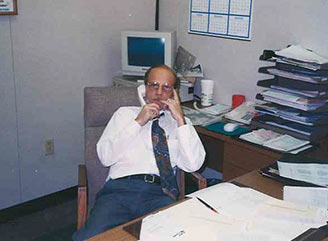 The beginning of the 20th century saw the first development of a moldable material, which opened the door to numerous possibilities. Leo Hendrick Baekeland’s celluloid creation paved the way for things like PVC and Teflon, both materials that were available by World War II. As more types of moldable materials appeared, a new group of professionals, plastic injection mold makers, began to use those materials to optimize their final products. With these new materials and the high demand for mass production in the late 1930 and early 1940s is what helped to create the industry as we know it today.
The beginning of the 20th century saw the first development of a moldable material, which opened the door to numerous possibilities. Leo Hendrick Baekeland’s celluloid creation paved the way for things like PVC and Teflon, both materials that were available by World War II. As more types of moldable materials appeared, a new group of professionals, plastic injection mold makers, began to use those materials to optimize their final products. With these new materials and the high demand for mass production in the late 1930 and early 1940s is what helped to create the industry as we know it today.
The Society of the Plastics Industry
The Society of Plastics Industry (SPI) was founded in 1937 by men who saw the potential for the new materials being created on a regular basis. Their goal was to start a leadership for the industry they saw rising as a result of technological advances. Initially, these pioneers encountered resistance to their products because people did not see the need to try new materials.
However, it soon became clear that a faster method of production was required. An entirely new set of objectives were generated following the invasion of Poland in 1939 and the attack on Pearl Harbor in 1941. It had become clear that there was an immediate need for SPI to grow their business in a different direction to meet a clear need that was World War II.
From the obvious need for quick mass production of goods, the Society of Plastics Engineers (SPE) was formed. Their primary focus was to create standards by which the plastic industry would create products. They also distributed information to educate others in how best to use plastics for the manufacturing of a diverse range of military needs.
Post-War Growth
People had accepted plastic as a solution for their immediate needs, but once the war was over, many companies went out of business. The SPE had already planned for this as an inevitability.
The demands of the war had already proved that the plastic injection mold makers were able to quickly produce goods that were acceptable on a large scale. While not quite as durable as their metal counterparts, it was far more efficient to use plastic injection mold makers to consistently produce a quality product in a short time frame.
All of this sprang from Baekeland’s celluloid creation shortly after the turn of the century.
Topics: Injection Mold Making

